
The Nebraska Publications Clearinghouse receives documents every month from all Nebraska state agencies, including the University of Nebraska Press (UNP). Each month we will be showcasing the UNP books that the Clearinghouse receives. UNP books, as well as all Nebraska state documents, are available for checkout by libraries and librarians, for their patrons, in Nebraska.
Here are the UNP books the Clearinghouse received in May and June 2020:
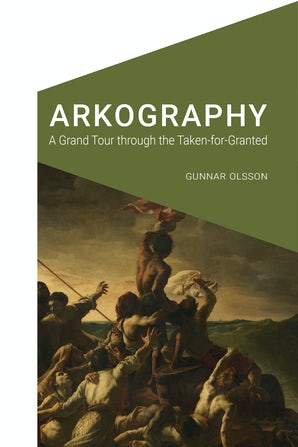
Arkography : A Grand Tour Through the Taken-for-Granted Gunnar Olsson (Series: Cultural Geographies + Rewriting the Earth)
In this fascinating text Gunnar Olsson tells the story of an arkographer, who with Pallas Athene’s blessings, travels down the Red River Valley, navigates the Kantian Island of Truth, and takes a house-tour through the Crystal Palace, the latter edifice an imagination grown out of Gunnael Jensson’s sculpture Mappa Mundi Universalis. This travel story carries the arkographer from the oldest creation epics extant to the power struggles of today—nothing less than a codification of the taken-for-granted, a mapping of the no-man’s-land between the five senses of the body and the sixth sense of culture. By constantly asking how we are made so obedient and predictable, the explorer searches for the present-day counterparts to the biblical ark, the chest that held the commandments and the rules of behavior that came with them—hence the term “arkography,” a word hinting at an as-yet-unrecognized discipline.
In Arkography Olsson strips bare the governing techniques of self-declared authorities, including those of the God of the Old Testament and countless dictators, the latter supported by a horde of lackeys often disguised as elected representatives and governmental functionaries. From beginning to end, Arkography is an illustration of how every creation epic is a variation on the theme of chaos turning into cosmic order. A palimpsest of layered meanings, a play of things and relations, identity and difference. One and many, you and me.
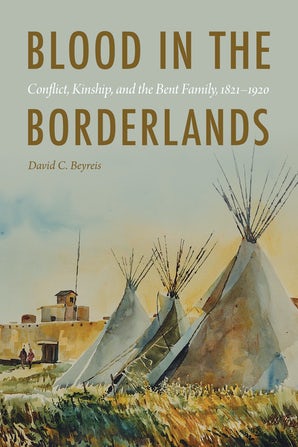
Blood in the Borderlands : Conflict, Kinship, and the Bent Family, 1821-1920 David C. Beyreis
The Bents might be the most famous family in the history of the American West. From the 1820s to 1920 they participated in many of the major events that shaped the Rocky Mountains and Southern Plains. They trapped beaver, navigated the Santa Fe Trail, intermarried with powerful Indian tribes, governed territories, became Indian agents, fought against the U.S. government, acquired land grants, and created historical narratives.
The Bent family’s financial and political success through the mid-nineteenth century derived from the marriages of Bent men to women of influential borderland families—New Mexican and Southern Cheyenne. When mineral discoveries, the Civil War, and railroad construction led to territorial expansions that threatened to overwhelm the West’s oldest inhabitants and their relatives, the Bents took up education, diplomacy, violence, entrepreneurialism, and the writing of history to maintain their status and influence.
In Blood in the Borderlands David C. Beyreis provides an in-depth portrait of how the Bent family creatively adapted in the face of difficult circumstances. He incorporates new material about the women in the family and the “forgotten” Bents and shows how indigenous power shaped the family’s business and political strategies as the family adjusted to American expansion and settler colonist ideologies. The Bent family history is a remarkable story of intercultural cooperation, horrific violence, and pragmatic adaptability in the face of expanding American power.
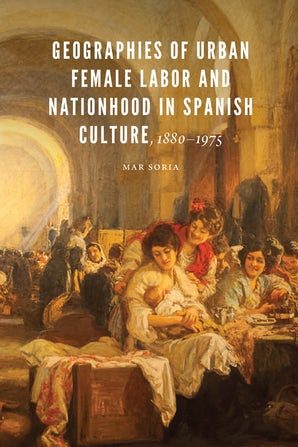
Geographies of Urban Female Labor and Nationhood in Spanish Culture, 1880-1975 Mar Soria (Series: New Hispanisms)
Mar Soria presents an innovative cultural analysis of female workers in Spanish literature and films. Drawing from nation-building theories, the work of feminist geographers, and ideas about the construction of the marginal subject in society, Soria examines how working women were perceived as Other in Spain from 1880 to 1975.
By studying the representation of these marginalized individuals in a diverse array of cultural artifacts, Soria contends that urban women workers symbolized the desires and anxieties of a nation caught between traditional values and rapidly shifting socioeconomic forces. Specifically, the representation of urban female work became a mode of reinforcing and contesting dominant discourses of gender, class, space, and nationhood in critical moments after 1880, when social and economic upheavals resulted in fears of impending national instability. Through these cultural artifacts Spaniards wrestled with the unresolved contradictions in the gender and class ideologies used to construct and maintain the national imaginary.
Whether for reasons of inattention or disregard of issues surrounding class dynamics, nineteenth- and twentieth-century Spanish literary and cultural critics have assumed that working women played only a minimal role in the development of Spain as a modern nation. As a result, relatively few critics have investigated cultural narratives of female labor during this period. Soria demonstrates that without considering the role working women played in the construction and modernization of Spain, our understanding of Spanish culture and life at that time remains incomplete.

Matters of Justice : Pueblos, the Judiciary, and Agrarian Reform in Revolutionary Mexico Helga Baltenmann (Series: The Mexican Experience)
After the fall of the Porfirio Díaz regime, pueblo representatives sent hundreds of petitions to Pres. Francisco I. Madero, demanding that the executive branch of government assume the judiciary’s control over their unresolved lawsuits against landowners, local bosses, and other villages. The Madero administration tried to use existing laws to settle land conflicts but always stopped short of invading judicial authority.
In contrast, the two main agrarian reform programs undertaken in revolutionary Mexico—those implemented by Emiliano Zapata and Venustiano Carranza—subordinated the judiciary to the executive branch and thereby reshaped the postrevolutionary state with the support of villagers, who actively sided with one branch of government over another.
In Matters of Justice Helga Baitenmann offers the first detailed account of the Zapatista and Carrancista agrarian reform programs as they were implemented in practice at the local level and then reconfigured in response to unanticipated inter- and intravillage conflicts. Ultimately, the Zapatista land reform, which sought to redistribute land throughout the country, remained an unfulfilled utopia. In contrast, Carrancista laws, intended to resolve quickly an urgent problem in a time of war, had lasting effects on the legal rights of millions of land beneficiaries and accidentally became the pillar of a program that redistributed about half the national territory.

Out of the Crazywoods Cheryl Savageau (Series: American Indian Lives)
Out of the Crazywoods is the riveting and insightful story of Abenaki poet Cheryl Savageau’s late-life diagnosis of bipolar disorder. Without sensationalizing, she takes the reader inside the experience of a rapid-cycling variant of the disorder, providing a lens through which to understand it and a road map for navigating the illness. The structure of her story—impressionistic, fragmented—is an embodiment of the bipolar experience and a way of perceiving the world.
Out of the Crazywoods takes the reader into the euphoria of mania as well as its ugly, agitated rage and into “the lying down of desire” that is depression. Savageau articulates the joy of being consort to a god and the terror of being chased by witchcraft, the sound of voices that are always chattering in your head, the smell of wet ashes that invades your home, the perception that people are moving in slow motion and death lurks at every turnpike, and the feeling of being loved by the universe and despised by everyone you’ve ever known.
Central to the journey out of the Crazywoods is the sensitive child who becomes a poet and writer who finds clarity in her art and a reason to heal in her grandchildren. Her journey reveals the stigma and the social, personal, and economic consequences of the illness but reminds us that the disease is not the person. Grounded in Abenaki culture, Savageau questions cultural definitions of madness and charts a path to recovery through a combination of medications, psychotherapy, and ceremony.
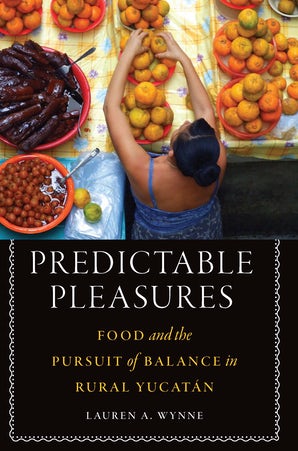
Predictable Pleasures : Food and the Pursuit of Balance In Rural Yucatan Lauren A Wynne (Series: At Table)
The pursuit of balance pervades everyday life in rural Yucatán, Mexico, from the delicate negotiations between a farmer and the neighbor who wants to buy his beans to the careful addition of sour orange juice to a rich plate of eggs fried in lard. Based on intensive fieldwork in one indigenous Yucatecan community, Predictable Pleasures explores the desire for balance in this region and the many ways it manifests in human interactions with food. As shifting social conditions, especially a decline in agriculture and a deepening reliance on regional tourism, transform the manners in which people work and eat, residents of this community grapple with new ways of surviving and finding pleasure.
Lauren A. Wynne examines the convergence of food and balance through deep analysis of what locals describe as acts of care. Drawing together rich ethnographic data on how people produce, exchange, consume, and talk about food, this book posits food as an accessible, pleasurable, and deeply important means by which people in rural Yucatán make clear what matters to them, finding balance in a world that seems increasingly imbalanced.
Unlike many studies of globalization that point to the dissolution of local social bonds and practices, Predictable Pleasures presents an array of enduring values and practices, tracing their longevity to the material constraints of life in rural Yucatán, the deep historical and cosmological significance of food in this region, and the stubborn nature of bodily habits and tastes.
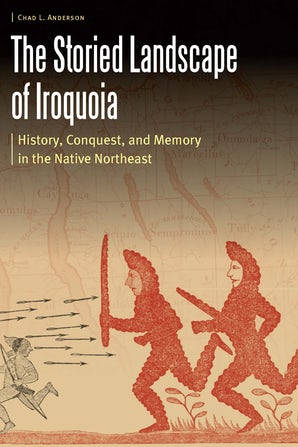
The Storied Landscape of Iroquoia : History, Conquest, and Memory in the Native Northeast Chad L. Anderson (Series: Borderlands and Transcultural Studies)
The Storied Landscape of Iroquoia explores the creation, destruction, appropriation, and enduring legacy of one of early America’s most important places: the homelands of the Haudenosaunees (also known as the Iroquois Six Nations). Throughout the late seventeenth, eighteenth, and early nineteenth centuries of European colonization the Haudenosaunees remained the dominant power in their homelands and one of the most important diplomatic players in the struggle for the continent following European settlement of North America by the Dutch, British, French, Spanish, and Russians. Chad L. Anderson offers a significant contribution to understanding colonialism, intercultural conflict, and intercultural interpretations of the Iroquoian landscape during this time in central and western New York.
Although American public memory often recalls a nation founded along a frontier wilderness, these lands had long been inhabited in Native American villages, where history had been written on the land through place-names, monuments, and long-remembered settlements. Drawing on a wide range of material spanning more than a century, Anderson uncovers the real stories of the people—Native American and Euro-American—and the places at the center of the contested reinvention of a Native American homeland. These stories about Iroquoia were key to both Euro-American and Haudenosaunee understandings of their peoples’ pasts and futures.
For more information about The Storied Landscape of Iroquoia, visit storiedlandscape.com.
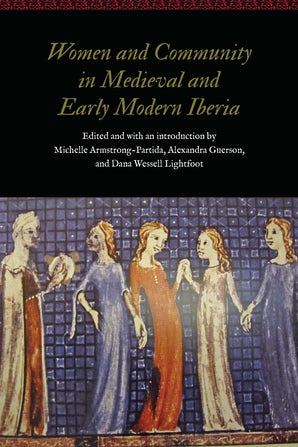
Women and Community in Medieval and Early Modern Iberia Edited and with an introduction by Michelle Armstrong-Partida, Alexandra Guerson, and Dana Wessell Lightfoot ; Series: Women and Gender in the Early Modern World
Women and Community in Medieval and Early Modern Iberia draws on recent research to underscore the various ways Iberian women influenced and contributed to their communities, engaging with a broader academic discussion of women’s agency and cultural impact in the Iberian Peninsula. By focusing on women from across the socioeconomic and religious spectrum—elite, bourgeois, and peasant Christian women, Jewish, Muslim, converso, and Morisco women, and married, widowed, and single women—this volume highlights the diversity of women’s experiences, examining women’s social, economic, political, and religious ties to their families and communities in both urban and rural environments.
Comprised of twelve essays from both established and new scholars, Women and Community in Medieval and Early Modern Iberia showcases groundbreaking work on premodern women, revealing the complex intersections between gender and community while highlighting not only relationships of support and inclusion but also the tensions that worked to marginalize and exclude women.
**All synopses courtesy of University of Nebraska Press (https://www.nebraskapress.unl.edu/)

